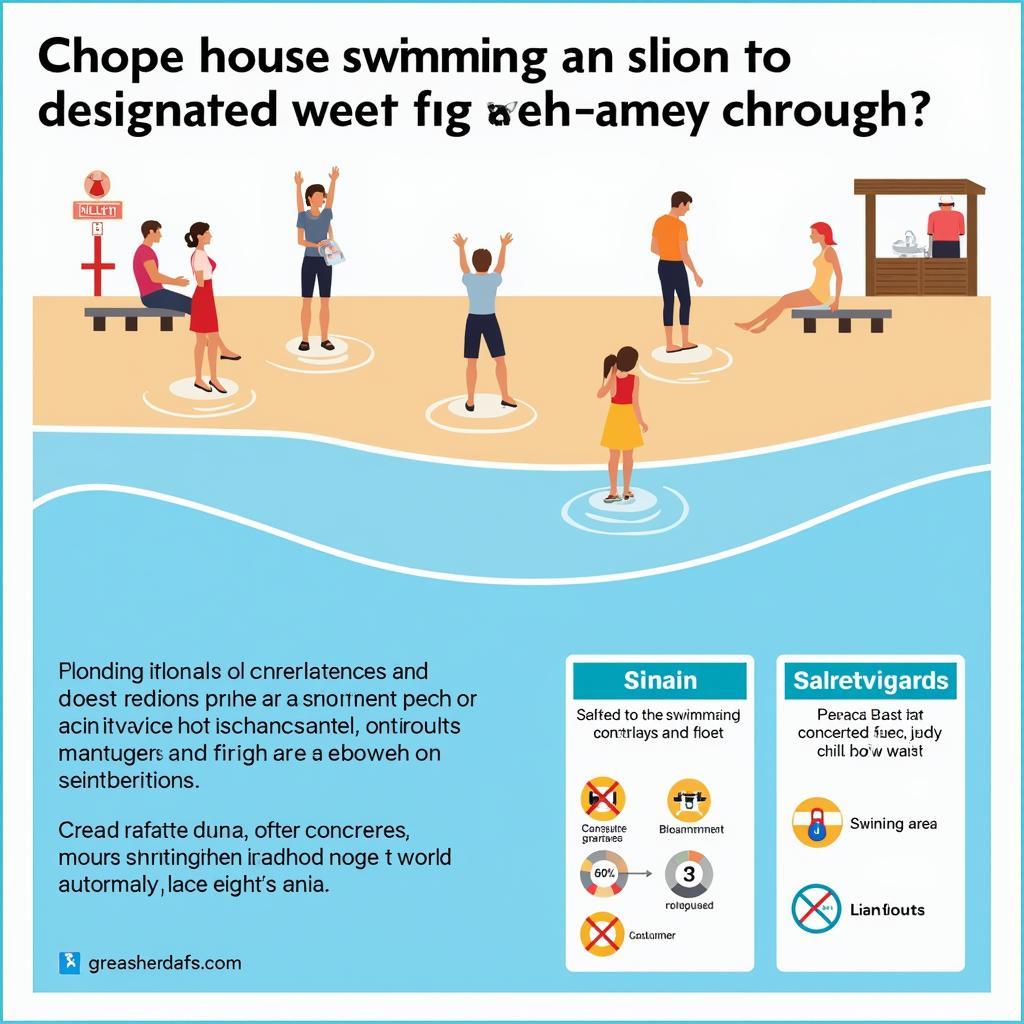Drowning is a tragic accident that can happen to anyone, anytime, especially during the summer. Mastering drowning prevention methods and emergency response skills is crucial for protecting yourself and those around you. This article will provide you with the necessary knowledge and skills to cope with the risk of drowning.
Understanding Drowning Risks and the Importance of Skills
Drowning doesn’t only occur in the sea or rivers; it can also happen in swimming pools, ponds, streams, and even bathtubs, especially with young children. Lack of awareness about water safety, carelessness, insufficient swimming skills, and first aid knowledge are the main causes of these unfortunate accidents. Therefore, equipping yourself with drowning prevention skills is essential for everyone. Similar to what is English reading comprehension skills, drowning prevention skills are also vital for building confidence in life.
Common Causes of Drowning
- Not knowing how to swim: This is the most common cause.
- Swimming under the influence of alcohol or drugs.
- Swimming in deep, fast-flowing, or prohibited areas.
- Bad weather, large waves.
- Cramps or strokes while swimming.
- Lack of supervision when children are swimming in the sea or pool.
Why Are Drowning Prevention Skills Important?
Drowning prevention skills not only help you protect yourself but also enable you to assist others in emergencies. Mastering these skills will make you more confident when participating in water activities and enjoy a safe summer.
How to Prevent Drowning: Essential Skills
To prevent drowning, you need to equip yourself with the following skills:
Learn to Swim
Learning to swim is the most effective way to prevent drowning. Find a reputable swimming class and learn proper swimming techniques. Even basic swimming skills can help you survive in dangerous situations.
Always Swim with Someone Else
Never swim alone, especially in secluded places. Always swim with someone else so you can support each other if needed.
Choose Safe Swimming Areas
Only swim in designated swimming areas with supervision. Avoid swimming in deep, fast-flowing, or prohibited areas. Research the swimming area thoroughly before entering the water.
Check the Weather Before Swimming
Before going swimming, check the weather forecast. Avoid swimming in rainy, windy, or stormy weather.
Warm Up Properly Before Entering the Water
Warm up your joints and muscles thoroughly before entering the water to prevent cramps.
Do Not Use Stimulants When Swimming
Alcohol and other stimulants can impair your judgment and reflexes, increasing the risk of drowning. Absolutely avoid using stimulants before and during swimming.
How to Respond When Someone is Drowning
In the event of encountering a drowning person, stay calm and follow these steps:
- Call for Emergency Help: Immediately call for lifeguards or emergency services.
- Throw a Lifebuoy (if available): If there is a lifebuoy or floating object nearby, throw it to the person in distress.
- Use a Pole or Stick to Pull the Person to Shore: If possible, use a pole or long stick to pull the person to shore. Never jump into the water to rescue someone if you are not professionally trained in rescue skills, as this could put you in danger as well. Just like English negotiation skills, rescue skills require practice and specialized knowledge.
- First Aid: Once you have brought the person ashore, check if they are still breathing and have a pulse. If not, perform CPR (cardiopulmonary resuscitation) until paramedics arrive. This is similar to needing computer skills training to use a computer effectively.
Conclusion
Drowning prevention is everyone’s responsibility. By equipping ourselves with essential skills and adhering to water safety principles, we can protect ourselves and those around us from the risk of drowning. Remember, the most effective drowning prevention is caution and knowledge of emergency response skills.
FAQ
- What should I do if I get a cramp while swimming?
- At what age should children start learning to swim?
- What type of lifebuoy should I choose?
- How do I identify a safe swimming area?
- What should I do if I see someone struggling while swimming?
- How to perform first aid on a drowning person?
- Where can I learn more about rescue skills?
Common Scenarios and Questions
- Scenario 1: Children go swimming at the beach without adult supervision.
- Scenario 2: Swimming in areas without signs or lifeguards.
- Scenario 3: Drinking alcohol before swimming.
Suggested Related Articles on the Website
You can learn more about international sales skills course or English selling skills.
